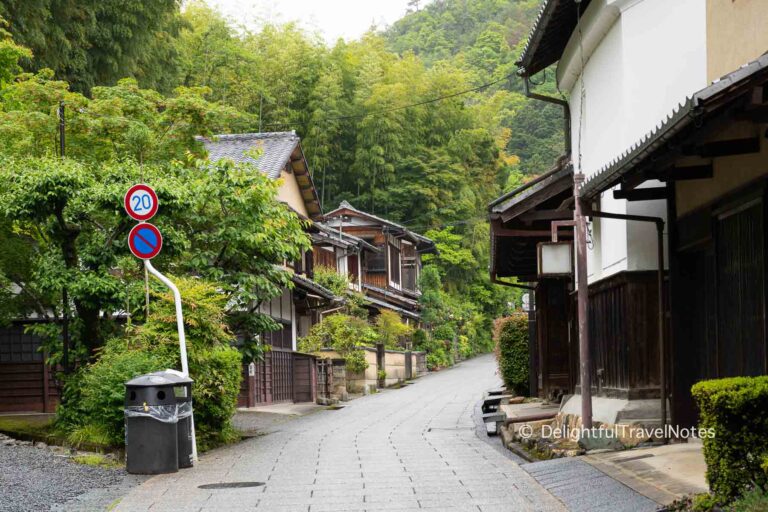Review: Hassun Restaurant in Kyoto
Kyoto cuisine is celebrated for its beautiful presentation, high-quality seasonal ingredients, and subtle, refined flavors. Located in Higashiyama Ward, Hassun is a well-regarded restaurant that isn’t overly expensive or difficult to book compared to other establishments in its class. We think Hassun is an excellent option for a memorable Japanese course meal in Kyoto. Here is a detailed review of our dining experience at this restaurant in May.
Overview
Hassun, established many years ago, is now under the direction of the second-generation head chef. The restaurant has a 4.20 rating on Tabelog, an online restaurant review platform in Japan. As Japanese people have high standards when it comes to rating restaurants, anything above 3.00 on Tabelog is considered pretty good. Hassun is one of the very few restaurants in Kyoto with a rating over 4.00, which means it is considered one of the best restaurants in Kyoto. Therefore, we were very determined to have a meal there.
The restaurant once held two Michelin stars, and it is currently awarded one star. However, for authentic Japanese dining experiences in Japan, don’t take Michelin list too seriously. We recommend relying on Tabelog instead.
About 3 weeks before our trip to Kyoto, we arranged our reservation through the concierge at the Celestine Hotel Gion. The restaurant is located in Higashiyama Ward, and it is just a 10-minute walk from the hotel. Dinner was fully booked for the dates we would be in Kyoto, so we reserved two seats for lunch. Try to reserve at least 1-2 months in advance for the best availability if you can.
Check Prices & Availability of the Celestine Hotel Gion
Booking.com Agoda.com
Type of Cuisine
Hassun is an old-fashioned kappo restaurant with about 10 seats. In a kappo setting, the chef prepares dishes behind a counter and serves them directly to guests sitting on the other side. This setup allows for an intimate experience where diners can watch their food being prepared and even talk to the chef, who provides insights into the techniques and ingredients used.
Kappo cuisine is similar to kaiseki in its focus on seasonal ingredients and artistic presentation, but it is usually more interactive. The dishes in the course meal are served individually and feature different ingredients and various cooking methods.
Dining at Hassun allowed us to further appreciate the refined aesthetics and delicate tastes that Kyoto is famous for. With an emphasis on showcasing the natural flavors of high-quality ingredients, I think the restaurant captures the spirit of Kyoto cuisine very well.
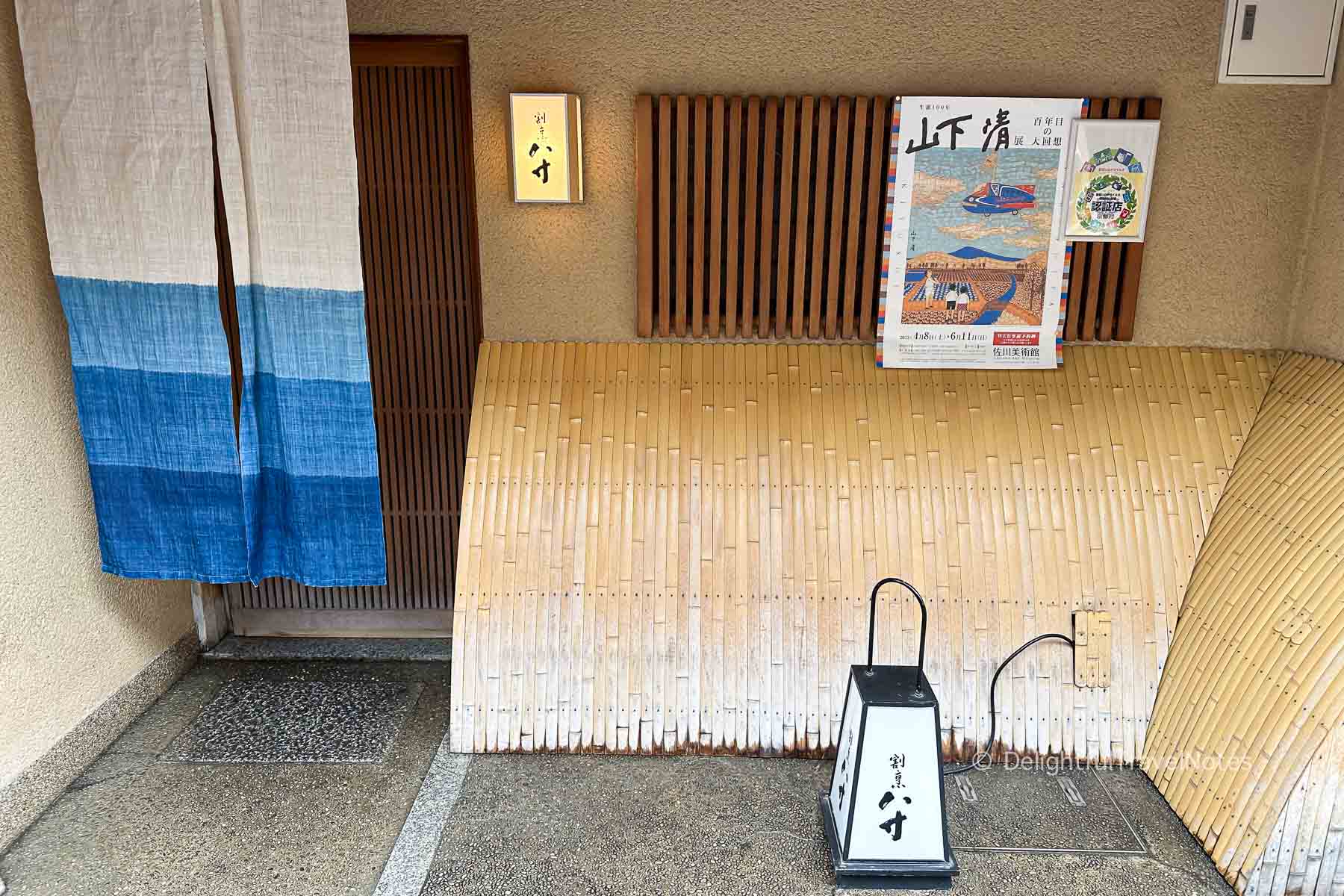
The restaurant has maintained a traditional, old-fashioned style both outside and inside. Just like other ryotei (traditional Japanese restaurants) in Kyoto, Hassun has a low-profile entrance. After arriving, we slid the door open and said “Sumimasen” to let staff know of our arrival. The chef assistant greeted and showed us to our seats at the counter.
Food
Our 11,000 yen lunch consisted of 8 courses, and the food was fantastic. We still talk about some elements of the meal long after the trip.
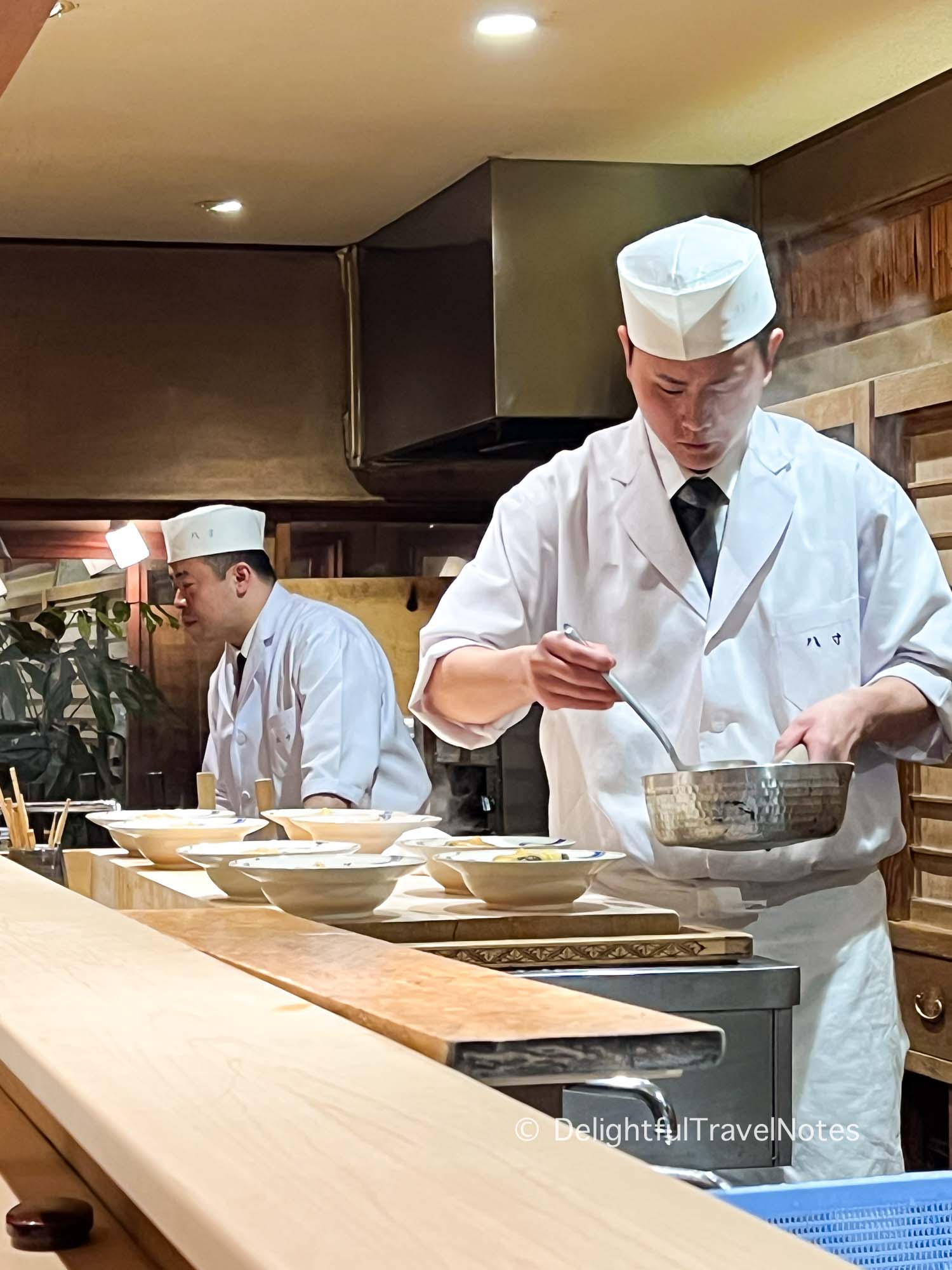
There were only two people – the head chef and his assistant – running the kitchen and restaurant. We were very impressed with how this two-person team at Hassun skillfully handled cooking, plating, serving, and cleaning up while maintaining conversations with guests.
The first course was yuba with seaweed and wasabi. Yuba is tofu skin created by skimming off the thin layer that forms on the surface of soy milk as it heats. It is one of the specialties of Kyoto cuisine. The delicate texture and subtle nuttiness of yuba, combined with the savoriness from seaweed and heat from wasabi, made this cold dish a good palate cleanser to start the meal.
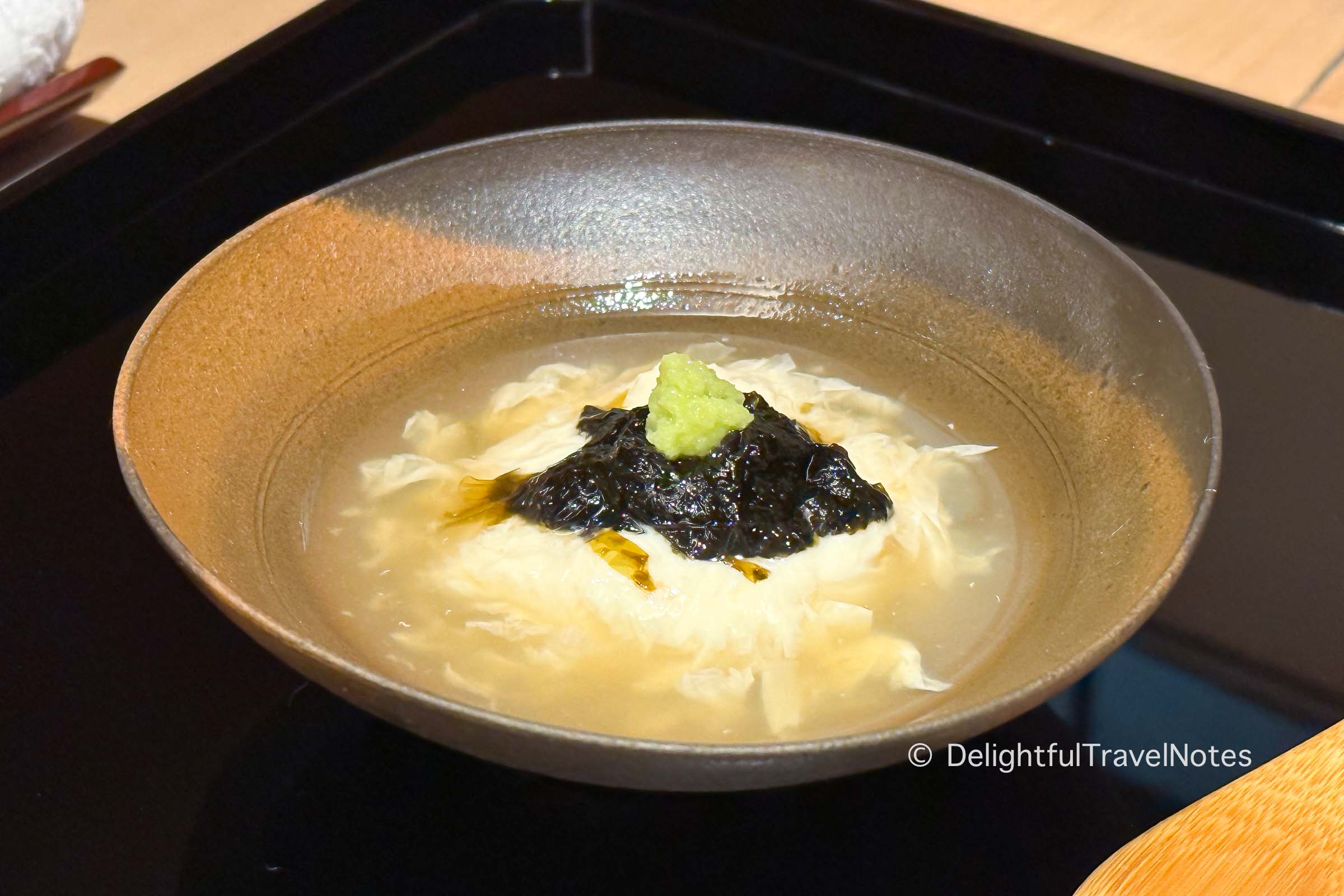
The second course includes a variety of small dishes. The name of the restaurant, “Hassun,” refers to the second course in Japanese kaiseki (traditional multi-course meal). This course reflects the seasonality and showcases the chef’s ability to harmonize flavors, textures, and visual appeal. My favorites on this plate were the unagi rolled burdock, tender octopus, and refreshing chopped squid salad (the small bowl in the photo).
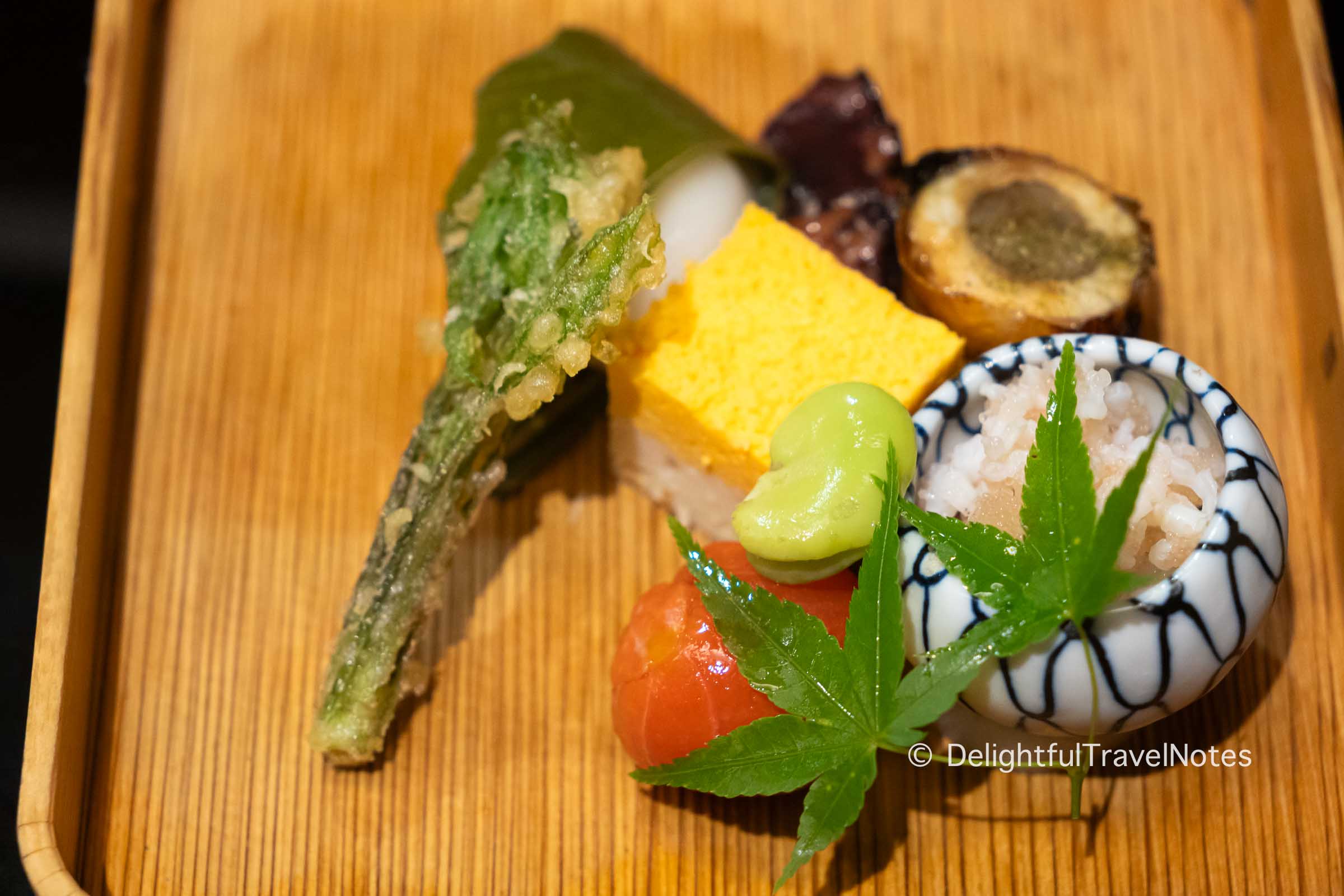
A plate of sashimi was our next course, and the akami (the lean red meat of bluefin tuna) was the best akami we tried in our trip. It was very lean and tender with a clean and mildly sweet taste – such a joy to eat.
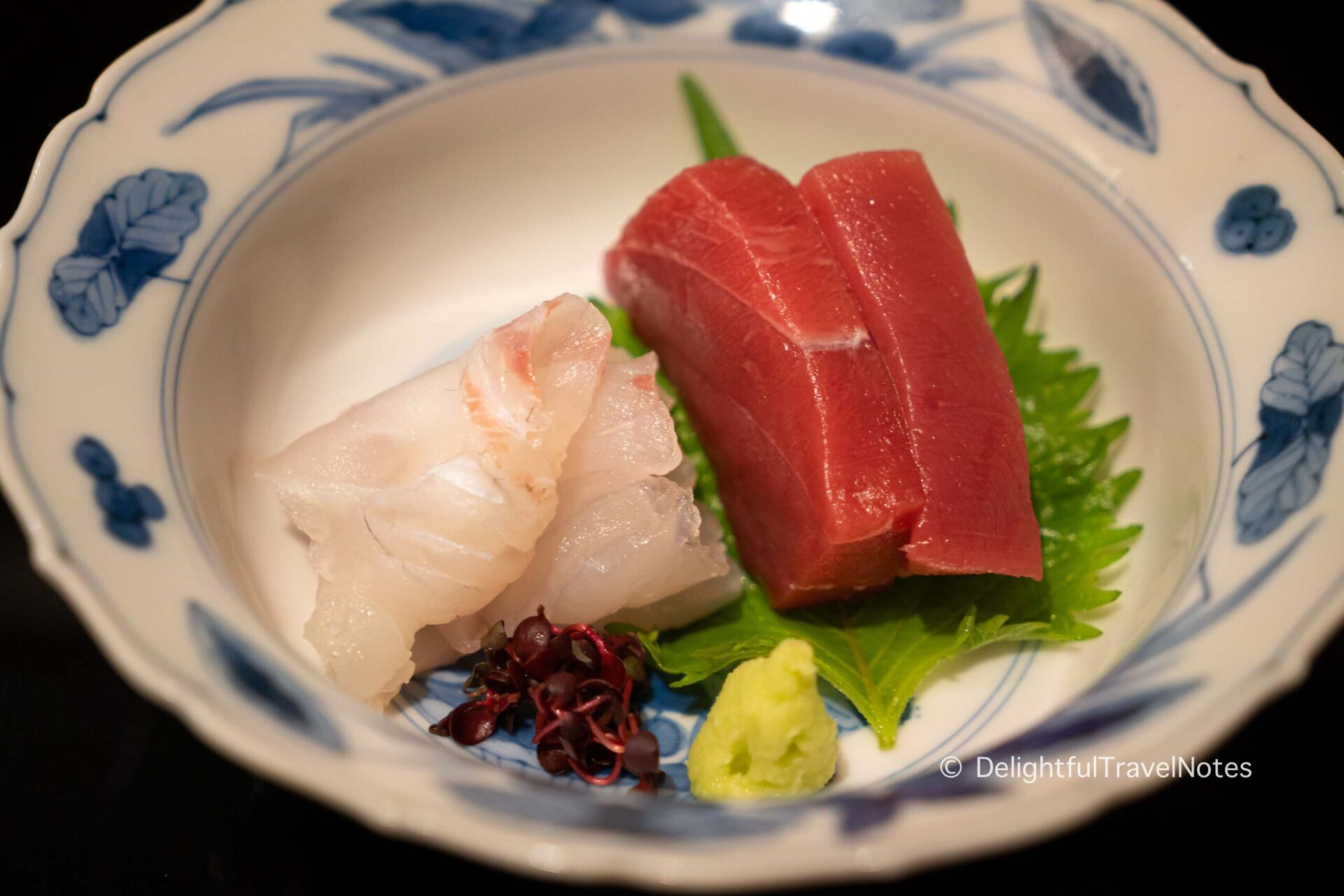
The fourth course was suimono with fish fillet and toasted mochi, and it was the highlight of our meal. Suimono is a Japanese clear soup with light dashi broth and delicately sliced ingredients. It is a highly-prized dish in traditional Japanese course meals as it demonstrates the chef’s skills to achieve crystal clear broth and bring out the best flavors of the ingredients.

As we removed the lid of the lacquered bowl, a gentle yet irresistible aroma was released with the steam. The broth was light with well-balanced flavors, while the fish was tender and mildly sweet. It may look very simple, but this soup was an exquisite dish.
While enjoying the soup, we could hear the sound of oil bubbling in the prepped area. The next course was eggplant tempura with miso, which was quite interesting to eat. The interior of the eggplant was creamy and sweet, a pleasant contrast to the crisp and feather-light tempura batter that encases it. With the salty and umami miso sauce, the dish featured both sweet and savory notes, perfectly complementing the eggplant.
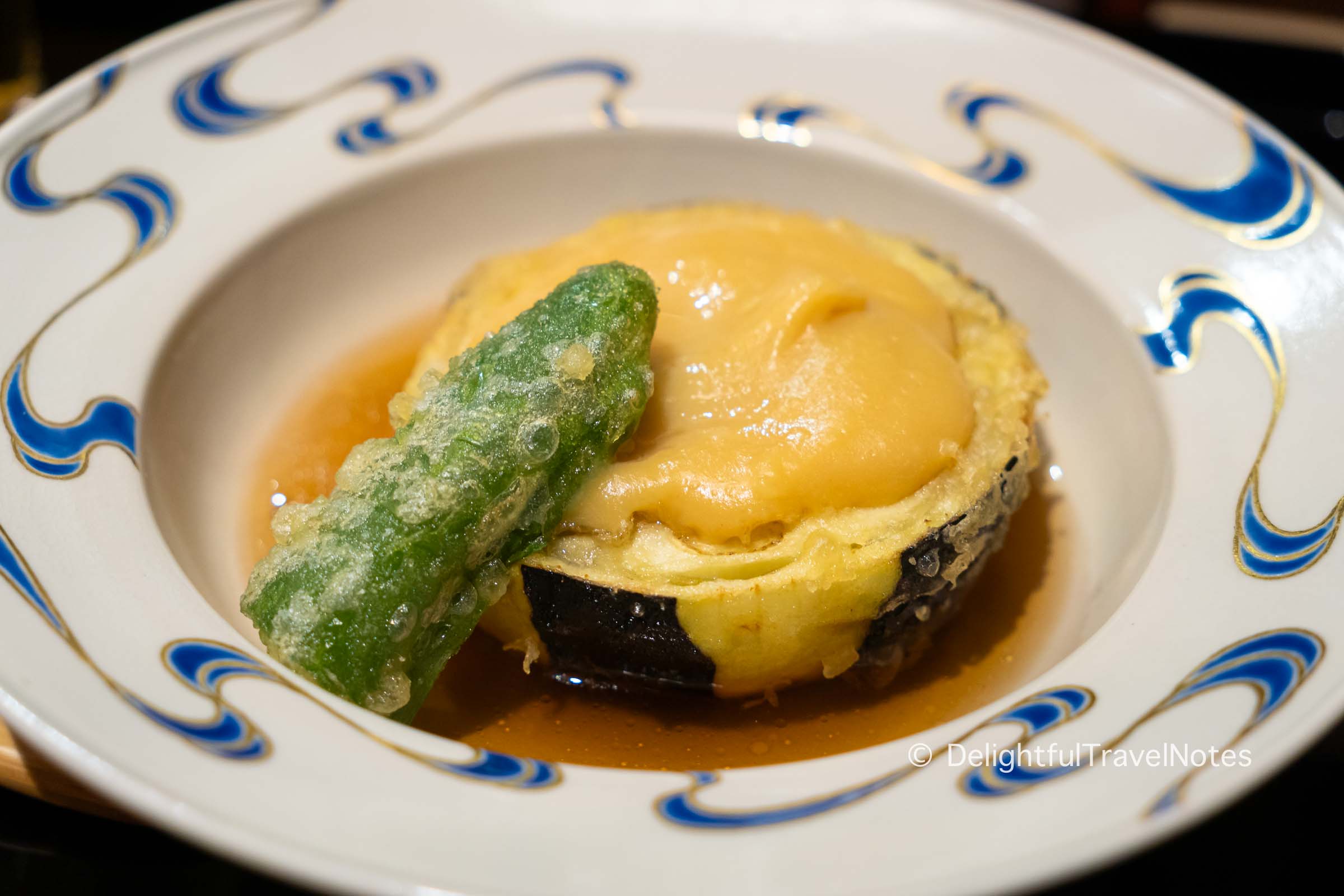
We were then served a small bowl of green vegetable salad before the final main dish: salt-grilled trout with rice, pickles, and baby anchovies. We ended the meal with a slice of juicy Japanese melon and a piece of chestnut – both of them are must-try produce of Japan.
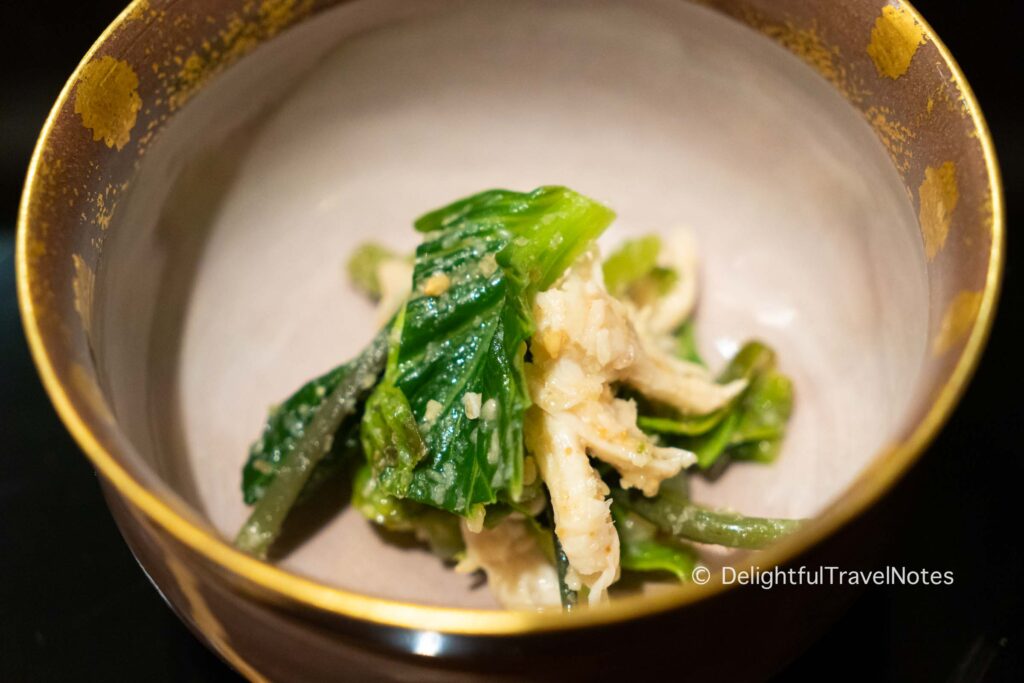
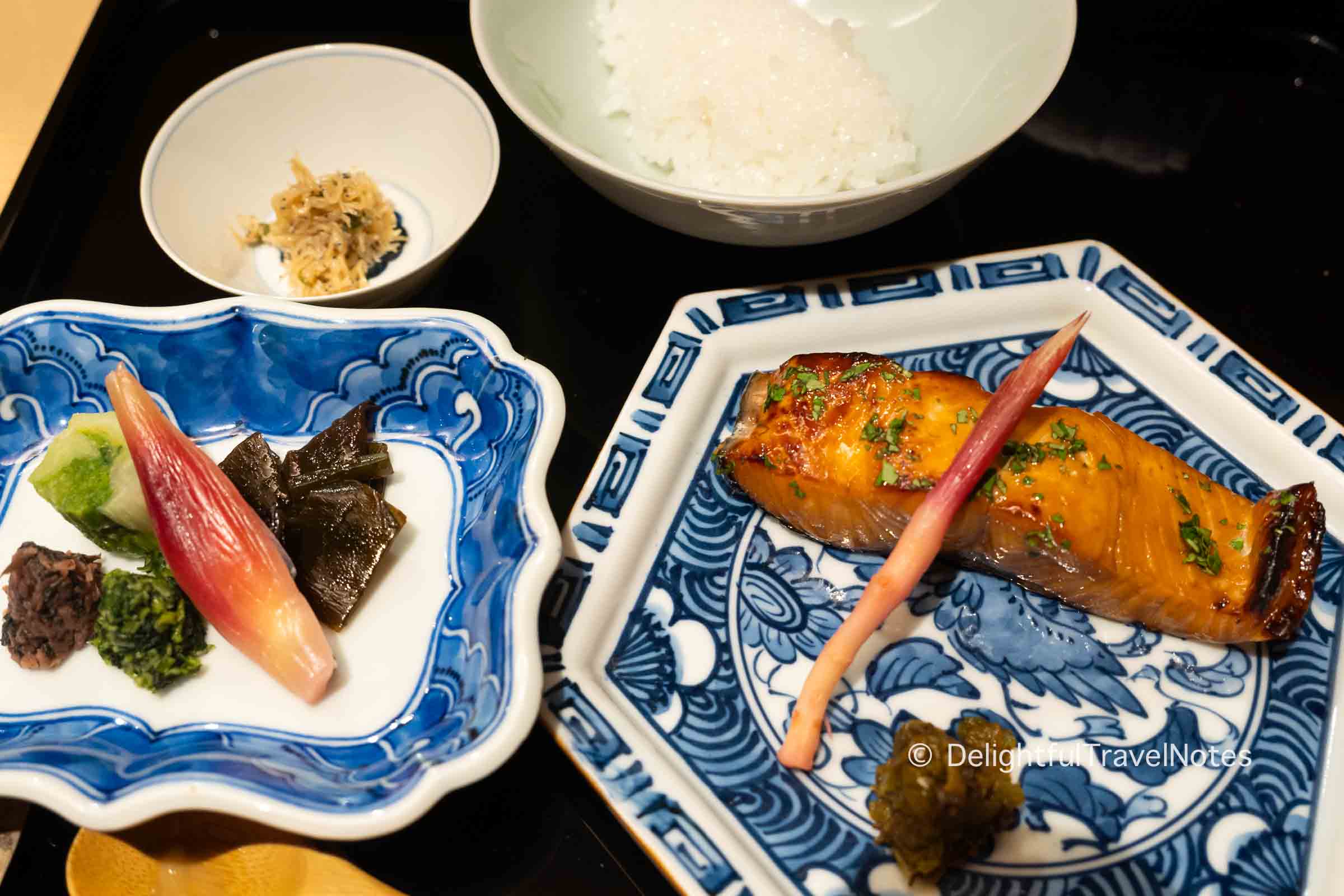
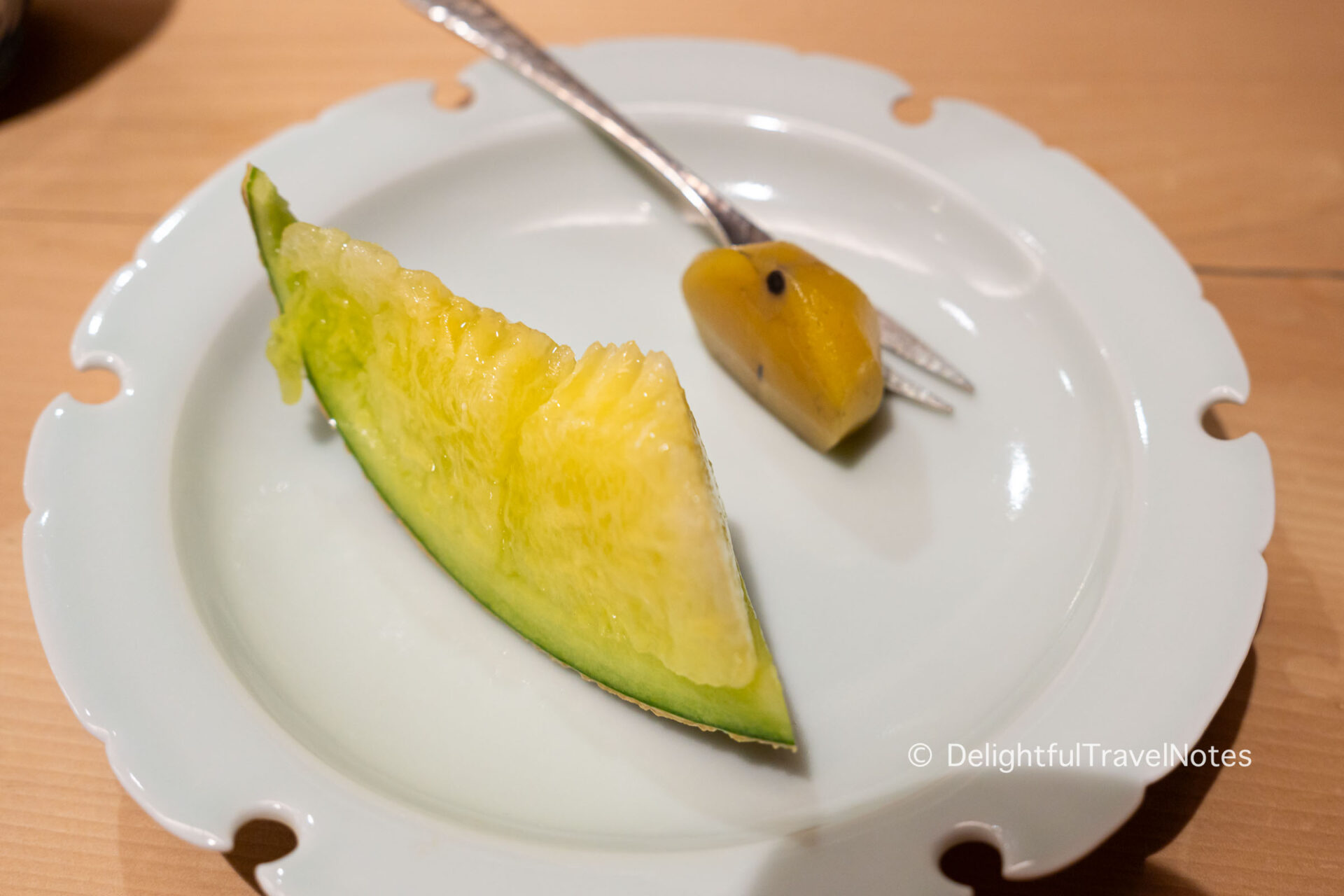
Overall Impression
Overall, we were satisfied with our lunch and all ingredients were very high quality (though there weren’t any premium ingredients). Each course may look small, but we were very full at the end. Dinner would probably feature more courses and more premium ingredients at a higher price (22,000 yen).
The whole lunch took almost two hours. I think when in Kyoto, it is a mistake not to set aside ample time for exploring the local cuisine. The pacing of our meal was just right. It didn’t feel rushed, and we never had to wait too long for the next course. That was pretty impressive, considering there were only two people handling all the tasks, including cooking, serving, and cleaning up.
We found the atmosphere at Hassun quite cozy and relaxing. The head chef had conversations with Japanese guests the entire meal. Since our Japanese was limited, he always smiled when serving food to us, making us feel comfortable. Well, we’ve been to omakase experiences with more engaging and friendlier counter service, but we thought the experience at Hassun was fine too. His assistant could speak some English, so he was responsible for explaining the English names of the ingredients in each dish. I recommend knowing some common phrases such as Arigatou gozaimasu (thank you), Oishii desu (it’s delicious), and Gochisou sama deshita (thank you for the meal) to show your appreciation during and after the meal.
If you want to dine at a highly-rated traditional restaurant in Kyoto, definitely consider Hassun. You will need to reserve in advance, but it is not so hard to find availability. Besides, its location in Higashiyama is very accessible.

